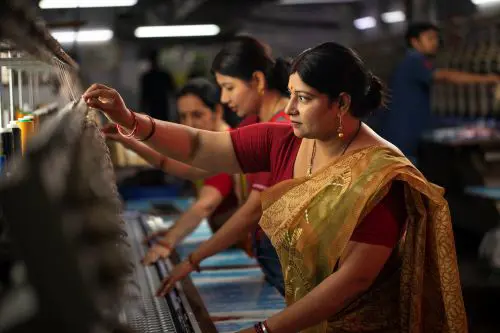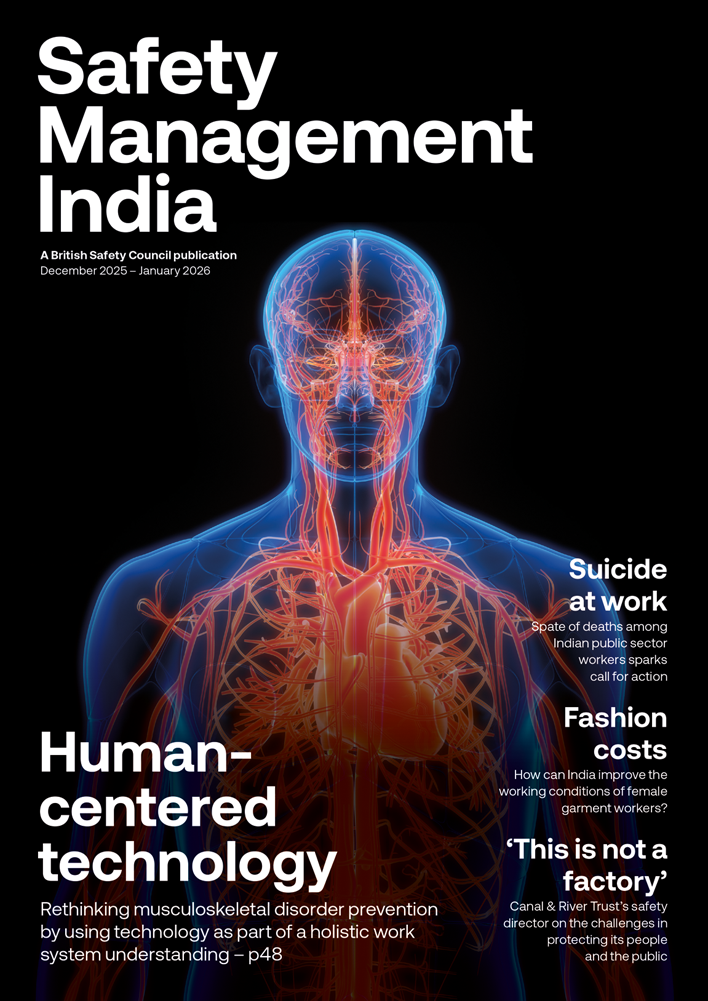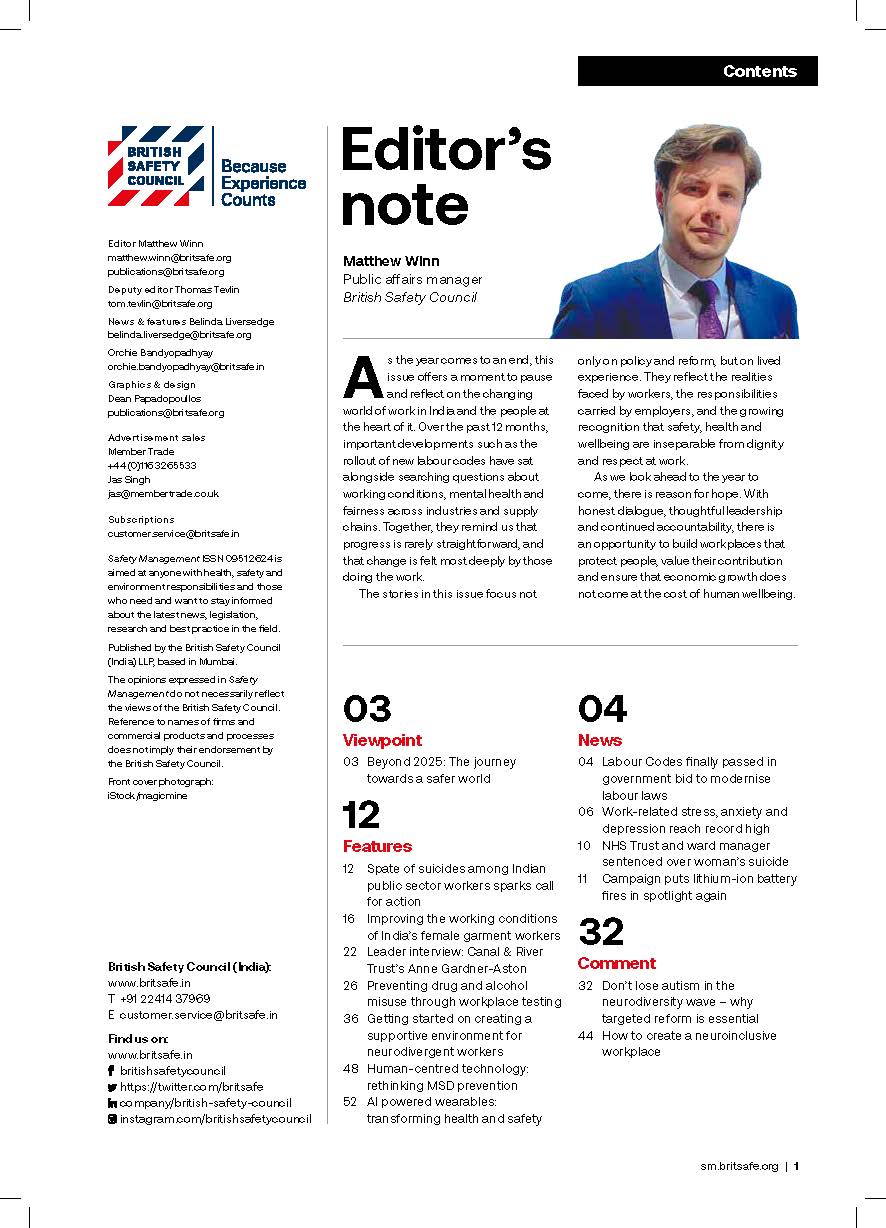The hazards and risks on construction sites constantly change as a project progresses, but carefully designed and placed signboards can both communicate crucial safety instructions and reinforce the employer’s expectations in terms of everyday safe behaviour.
Features
Why good visual management makes for safer construction sites
Construction sites present unique challenges for workers’ health, safety and wellbeing. Work often involves hazardous tasks, shifting site conditions and multiple contractors. Under these conditions, clear communication is paramount. Visual management is a powerful strategy for streamlining messages and guiding safe behaviour. Tailored site boards help workers navigate complex environments with fewer mistakes and reinforce a company’s commitment to safety.
Communication and visual management
Workers need concise, visible reminders to make safe choices. They might be tasked with operating heavy machinery, managing elevated work, or supervising large teams. Strong visual cues – symbols, colour-coded warnings and brief statements – prompt immediate awareness of key rules or hazards. Large, legible text makes details easier to understand in noisy, dusty or low-visibility conditions.
Standardising the look and layout of signage builds familiarity. Many construction teams operate under tight deadlines, so any loss of clarity can introduce risk. Consistent design helps workers recognise crucial information at once. Aligned colours, icons and terms across all boards reinforce rules and lessen guesswork. Customised site boards offer flexibility.
Changes in project phases – such as moving from groundwork to internal fitting – introduce new hazards. Weather or seasonal considerations (for example, slippery surfaces in winter) must also be highlighted. Boards that can be quickly revised ensure messages remain relevant. A workforce that sees updated, well-maintained boards is likelier to trust and follow posted instructions.
 Photograph: iStock
Photograph: iStock
Branding and signage
Adding a company’s logo, colours and other branding elements to signage distinguishes it from generic signs. Consistent branding signals that the business has a clear identity and vision for safety.
It also ensures site boards are noticeable amid the visual clutter of a busy site. Workers and visitors see that safety protocols are directly linked to the organisation’s values.
Branded site boards present a professional image to clients, local communities and regulatory bodies. They display essential information – site rules, emergency contact details or codes of conduct – while showing that the organisation invests in high-quality health and safety measures. This approach can help build a positive reputation for reliability and care, which might strengthen future business relationships.
Wellbeing and safety culture
Most construction tasks are physically demanding; workers face risks from heavy lifting, machinery noise and exposure to the elements. Mental stress can also accumulate when deadlines are tight.
Site boards that include information on hydration, breaks or mental health helplines remind everyone that wellbeing is part of overall site safety. Normalising supportive messages encourages open conversations about mental health, helping to reduce stigma.
A culture of health and safety emerges when messages align with employees’ daily experiences. Workers who see consistent reminders about safe conduct, hazard reporting or wellbeing practices are more likely to take these standards on board. Clear, frequent visibility of safety messages cultivates a shared sense of responsibility, nudging individuals to look out for themselves and each other.
 Photograph: iStock
Photograph: iStock
Practical steps for implementation
Managers with safety responsibilities will benefit from conducting audits to identify any gaps in current signage. Areas with high footfall, locations near potential hazards and spots where decisions are made (for example, near lifts or scaffolding) need informative, eye-level signs. Reviewing accident or near-miss records can also reveal where additional signage might prevent repeats of common errors.
Listening to employee feedback is essential. Workers on the ground often have practical suggestions on the most appropriate, suitable and effective placement or wording of signs. Frequent consultations help ensure that the safety messages provided by on-site signage are understood correctly and that signage addresses real hazards. This inclusion fosters a sense of ownership: teams feel that their insights matter and that the company invests in the right solutions.
Damaged or outdated signs can lead to complacency. Custom boards require periodic checks for wear and relevance. Plans that account for regular inspection keep boards legible and accurate. Project or regulatory changes must also be factored in. If new legislation stipulates different personal protective equipment standards or introduces new safety guidelines, signage should reflect these developments.
First aid points and mobile solutions
Beyond static site boards, integrating first aid points and using free-standing or mobile solutions further supports a safer and more flexible approach to visual management. Strategically placed first aid points ensure that workers have immediate access to medical assistance in case of injury. Clearly marked locations help workers and visitors identify where to go for help, reinforcing safety as a priority.
Free-standing site boards and mobile safety response stations add another layer of adaptability. Construction sites are constantly evolving, with work zones shifting as projects progress. Mobile safety stations can be repositioned to maintain high visibility in critical areas, ensuring that safety messages, site rules and emergency procedures remain accessible at all times. These solutions allow safety information to stay aligned with on-site changes, making it easier for workers to respond effectively to hazards.
Introducing visual management
Visual management is a decisive factor in improving construction site safety. Workers face heightened risks in environments where distractions, tight schedules and multiple contractors converge. Site boards that are clear, well-designed and regularly updated offer a reliable anchor. They enhance hazard awareness, reinforce wellbeing practices and unify teams under a shared identity. Strong communication tools bring consistency to fast-moving worksites, reducing avoidable errors and underlining an organisation’s duty of care.
Customised site boards amplify these benefits. They merge bold design with adaptable features that can be tailored for any project phase. Each message – whether a hazard alert, a company value or a wellbeing reminder – reminds everyone on-site to place safety at the heart of operations. Clarity, consistency and concern for worker welfare underpin a robust safety culture that ultimately protects both people and reputation.
For more information see:
safetybuyer.com
E. [email protected]
T. 0800 043 0161
Kevin Rowe is Managing director of SafetyBuyer
FEATURES

The price of fast fashion is not pretty
By Orchie Bandyopadhyay on 11 December 2025
The largely female workforce in India’s garment manufacturing industry faces long hours, low wages and poor working conditions, and campaigners say it is time the Indian government and international clothing brands took tougher action to improve working conditions, pay and employment rights.

Suicide at work: a major problem in India
By Orchie Bandyopadhyay on 11 December 2025
Recent reports of suicides among workers ranging from police officers to electoral roll officials have prompted calls for employers and government agencies to do more to both reduce excessive workloads and provide better mental health support at work.



